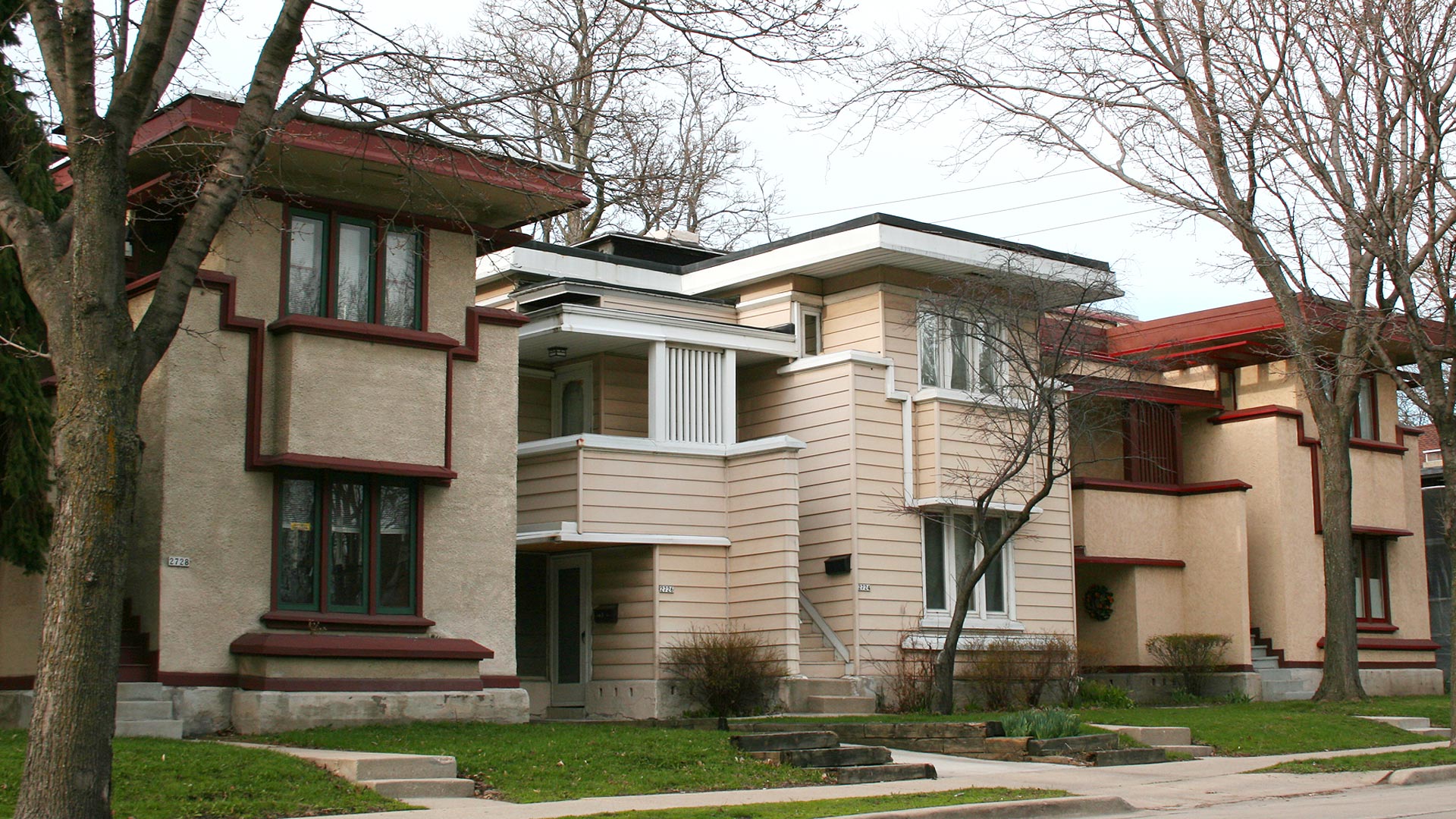#11992. Contrasting Facades: A Dialogue Between Prairie Style and Modernism in Urban Housing
The image presents an interesting ensemble of residential houses demonstrating a contrast between two architectural styles of the early 20th century. On the left and right are buildings in the Prairie style developed by Frank Lloyd Wright, characterized by horizontal lines, low-pitched roofs with wide overhangs, and emphasized decorative elements. The facades of these houses are made of light stucco with contrasting dark red wooden trim that highlights the horizontal and vertical structural elements.
At the center of the composition is a house in a more modernist style with beige horizontal siding, a flat roof, and geometric forms. This house stands out with its white vertical trim elements and clean lines characteristic of modernism. The windows in all buildings have clear geometric divisions, typical for early 20th-century architecture.
The facade design shows the influence of organic architecture, where buildings harmoniously blend with the surrounding landscape of mature trees. When designing your own facade, you could borrow techniques such as contrasting trim for architectural elements, emphasizing horizontal lines to visually expand the space, using natural materials, and creating expressive geometric forms. Also notable are the wide eaves that protect from precipitation and create an interplay of light and shadow on the facade.
